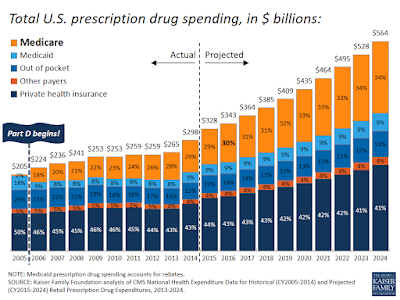Increasing transparency on the cost of generic drugs could save about $4 billion a year in overall healthcare spending in the U.S., according to a new paper. Making actual generic drug acquisition costs available to third-party payers would empower health plans to negotiate lower rates and essentially level the playing field in a pharmaceutical supply chain that’s shrouded in secrecy.
Tyrone’s commentary:
If acquisition cost data were to be made available for generic drugs, the work is just beginning for third-party payers such as self-funded employers. First, the plan sponsor and their advisors must properly interpret the data. Interpretation of pharmacy data requires the purchaser to understand not only what they want to achieve in their relationship with their PBM but also the competitive market and their ability to drive disclosure of details on services important to them. This level of understanding requires an indeterminate amount of time and energy. Are you up for it? If so, keep reading.
Don’t rely solely on analytical software to do the job for you. USA Track & Field, which approves official events, has a 66-page manual of procedures just for certifying marathon races! It lists 13 items of necessary equipment for measuring a race including masking tape and spray paint for temporary markers, a pocket calculator with at least 8 digits, a good road bicycle preferably with high pressure tires and a Jones counter, a device which attaches to the front bike wheel and measures distance by counting revolutions.
The point is that a strong human element is required for success in assessing transparency which is done more effectively by a trained eye with personal knowledge of the purchaser’s benefit and disclosure goals. Lest I forget, don’t take for granted that the PBMs definition of a generic drug is in alignment with your plan design goals. See the snapshot below, taken from TransparentRx’s fiduciary contract, of a strong definiton for those products considered to be generic drugs.
Ultimately, patients would pay less at the expense of pharmacy benefit mangers’ profits, researchers said. If the average prescription generic drug priced at $26 was reduced by $1, that would reduce health spending by $4 billion every year, data shows. The average price for branded drugs is $308.
The actual amounts paid to drug manufacturers for both branded and generic prescriptions, including reductions negotiated by PBMs, are protected as confidential trade secrets, according to analysis from the Leonard D. Schaeffer Initiative for Innovation in Health Policy, which is a partnership between the Center for Health Policy at Brookings and the USC Schaeffer Center for Health Policy & Economics.
[Read More]
 Retail prescription drug expenses accounted for about 12% of total U.S. healthcare spending in 2015, up from about 7% through the 1990s. Pharmaceutical and biotechnology sales revenue increased from $534 billion to $775 billion between 2006 and 2015, according to a recent report from the U.S. Government Accountability Office. About two-thirds of drug companies saw their profit margins increase over that period, averaging 17.1%.
Retail prescription drug expenses accounted for about 12% of total U.S. healthcare spending in 2015, up from about 7% through the 1990s. Pharmaceutical and biotechnology sales revenue increased from $534 billion to $775 billion between 2006 and 2015, according to a recent report from the U.S. Government Accountability Office. About two-thirds of drug companies saw their profit margins increase over that period, averaging 17.1%.
